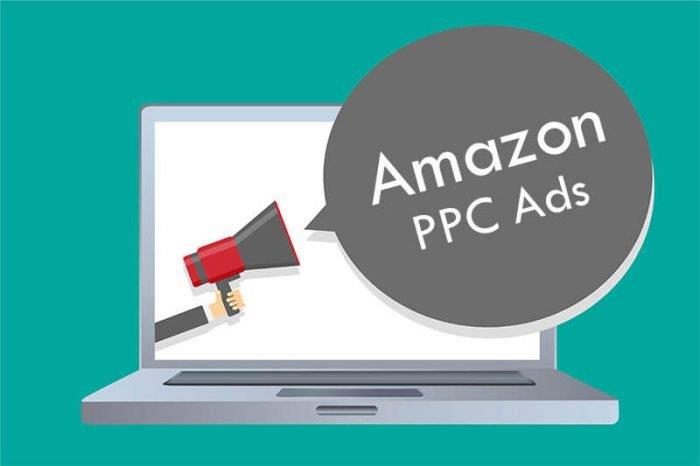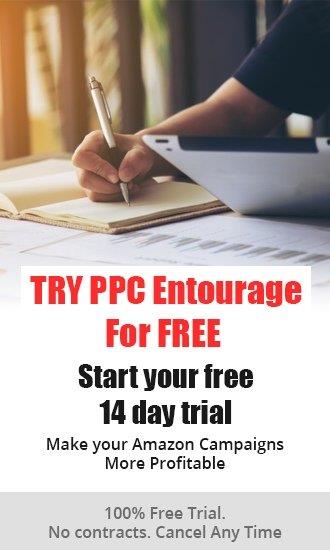If you’re venturing into the world of Amazon PPC ads for the first time, you’ve probably got plenty of questions on your mind. How do you figure out your monthly ad budget? What bidding strategy should you use? How do Amazon PPC ads differ from Google AdWords? In this article, we answer all that, and more.
Why should I use Amazon PPC ads when there's Google AdWords?
Those who advertise on Amazon generally enjoy higher click through rates, lower Cost Per Clicks (CPCs), and increased profitability. In this case study that pitted Amazon ads against Google AdWords for 4 months, for example, it was shown that the average CPC obtained with Amazon ads was 38% lower than that of Google AdWords.
Why is this so? That’s because Amazon PPC ads allow you to reach out to consumers who are further along in their Buyer’s Journey. When someone Googles a product, they’re typically in the Awareness or Consideration stage. They might look at product comparison charts and read reviews, but they’re generally not ready to make a purchase yet. Consumers who search for products on Amazon, however, are usually there with the intent to purchase a product that they have done prior research on.
How do I figure out my Amazon PPC ad budget?
Most Amazon sellers tend to aim for a 25% Advertising Cost of Sales (ACoS), so estimate how much you’re likely to make through your ads, and work backwards. If you’re expecting to generate $1000 in product sales through your Amazon PPC ads, for instance, that would mean you can spend up to $250 on said ads.
Why is 25% the sweet spot? If your ACoS is lower than this, you’re essentially leaving money on the table. It’s great that you’re raking in more sales without spending too much on your ads, but this means that you’re losing out on more sales and revenue by bidding too conservatively and/or limiting your daily spend.
If your ACoS is higher than 25%, on the other hand, this might be a sign that you’re relying too heavily on paid advertising to drive sales. Don’t worry - as long as your campaigns are still profitable, you’re still good. That said, you might want to think of ways to get more organic sales. You don’t want to be affected too badly in the event that new competitors come in and drive up the prices of your ads!
What bidding strategy should I employ?
This depends on the objective of your ad campaign. Say you’re hoping that your ads will drive sales, but your primary goal is really to build brand awareness. Bearing this in mind, you might be less fixated on whether your ads are profitable, and simply adopt the strategy of outbidding your competitors so that your target audience will see your ads, and not theirs.
If you’re working on a long-term ad campaign to boost sales, however, then you’ll definitely want to keep an eye on your margins. Under such circumstances, work out your ideal ACoS (and make sure that you’re making a profit with this ACoS!), and figure out how much you can bid per day.
Pro-tip: even if you can get away with, say, spending $50 per day, we recommend that you start out slow, and start testing small bids ($2, then $4, then $6) first. This way, you can figure out the minimum amount you need to spend in order to get your conversions. If you dump in your entire daily budget right off the bat, you’ll run the risk of overpaying for those conversions!
Which format of PPC ad is the most effective?
There’s Sponsored Products, Headline Search Ads, and Product Display Ads to consider. Let’s break it down…
First, Headline Search Ads are ads that appear at the top of the results page when a consumer searches for a product on Amazon; these feature multiple products at a time. With these ads, you get the option to redirect your clicks to a search results page, your products page, or even your storefront. Next, Sponsored Products Ads appear within search results, and they feature specific products that are relevant to a consumer’s search terms. Last but not least, Product Display Ads appear not on the search results page, but on pages of related or targeted products.
Most Amazon sellers automatically default to Sponsored Product Ads, and for good reason. These ads generally bring advertisers the most volume (both clicks and conversions), and if you nail your keyword targeting, you can definitely experience a great deal of success with these ads. That said, if you’re trying to promote a new collection of products, you might find Headline Search Ads more appropriate, and if you’re in a highly specific niche, you’ll want to experiment with Product Display Ads as well.
Should I use Amazon’s Bid+ feature?
As a general rule of thumb, we don’t recommend this. The Bid+ feature essentially raises your bid by 50% whenever a competitor starts to outbid you, and if you aren’t keeping an eye on your campaign, you could end up overspending by a ton in a short period of time.
If you’re still keen on outsourcing your bid adjustments, however, our Autopilot tool might do the trick. This tool helps Amazon advertisers optimize the bids for their individual keywords, so that they can hit their target ACoS. Unlike Bid+, Autopilot only raises your bid price till the point where you hit your target ACoS - this makes more sense than blindly raising your bid price to match that of your competitors’.
I’m getting a lot of clicks, but my conversion rate is low. How can I fix this?
The good news? You don’t have a problem with visibility. The bad news? Your customers aren’t finding your product particularly appealing. Maybe you don’t have enough product photographs, or maybe your product is priced too high. Do a bit of A/B testing, and figure it out!
Getting started with Amazon PPC ads
Dipping your toe into the world of Amazon PPC ads can feel intimidating at the start, but once you’ve gotten the hang of it, you’ll wonder how you ever survived without your ad campaigns.











